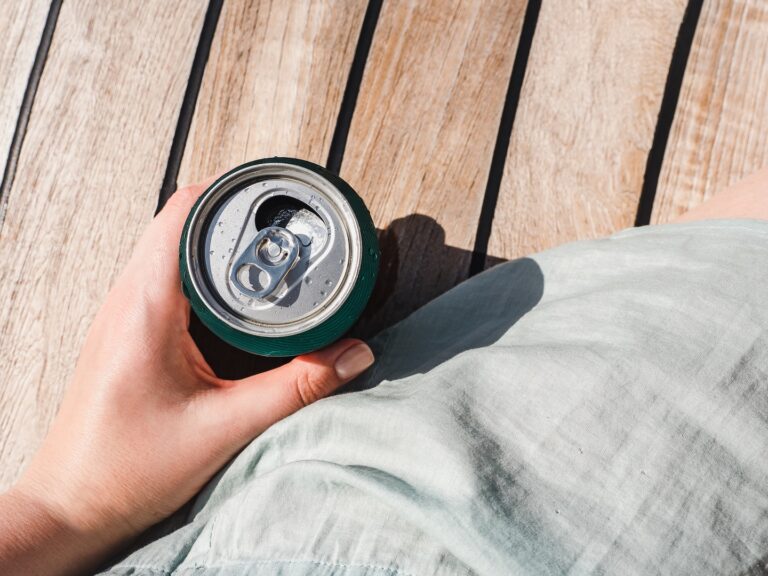But several soft drinks designed for health-conscious consumers Poppi soft drinks have hit the market. A recent ad for Poppi, a soda that describes itself as “prebiotic” and containing “clean ingredients,” touts it as a “revelation” for the future of soft drinks. “This will be the last time you think soda is a bad word, bad for you,” the ad reads, accompanied by a caption declaring that “in the future, everyone will drink soda.”
But is there really such a thing as a healthy soft drink?
“It’s a philosophical question. Is a slightly healthier product a good choice?” said Marion Nestle, author of a book on the soda industry and professor emeritus of nutrition, food studies and public health at New York University. “If you’re trying to reduce your sugar intake, this is one way to do it. I suppose they’re better alternatives, but whether they’re good is another question.”
A growing soft drink market
The global carbonated soft drink market reached an estimated $343.4 billion this year and is expected to grow, with North America accounting for the largest value share, according to food industry research firm Mordor Intelligence.
Several brands, many of which tout themselves as a low-calorie alternative with little or no added sugar, have become popular. Among them are Olipop — which is on track to hit $500 million in sales this year, according to Bloomberg — Zevia, Whole Earth, Culture Pop, Live Soda, Sidekick and Green Cola.
Unregulated health claims
But when it comes to health, most sodas — even those with fewer calories — aren’t the best choice, experts say.
“In my field, we often talk about the ‘health halo,’ which is trying to make something that’s not very healthy seem healthy. And I would say that’s the case with these products,” said Marlene Schwartz, director of the Rudd Center for Food Policy and Health at the University of Connecticut. “There’s a lot of things that companies can say that aren’t regulated. That’s something advocates have been complaining about for a long time,” she added.
Companies can use unregulated terms like “clean,” “green,” and “gut-healthy,” and many use appealing labels like “naturally sweet,” “made with live probiotics,” “non-GMO,” and “all-natural flavor.” Many of these claims aren’t based on rigorous research, and it’s generally unclear whether these products contain enough of a particular “healthy” ingredient to have a real positive effect, Nestlé and Schwartz said.
Last month, a consumer filed a class-action lawsuit against Poppi, alleging that the brand contained too few prebiotic ingredients to have the claimed effects. Poppi did not respond to a request for comment, but said in a statement to The Associated Press at the time of the lawsuit that it stood by its products and called the lawsuit “meritless.”
Olipop, one of the new soda brands, claims its product line “supports digestive health” and lists what it calls “OliSmart” ingredients such as calendula flower, nopal cactus, kudzu root and marshmallow root. The company says in its marketing that its products contain prebiotics, herbal extracts and plant fibers, and that some of its flavors support immune health.
Nestlé said it saw “nothing in the ingredient list” of Olipop drinks that is beneficial “for the microbiome, digestive function or metabolic health.” It’s also unclear how much of each ingredient is in a given can.
“What is certain is that they appeal to health-conscious people,” she said, adding, however, that the drinks would be a better alternative to sugar-laden Coke or Pepsi.
Olipop CEO Ben Goodwin said in an email that Olipop’s formulas are backed by research and that the amount of fiber in its products — up to 9 grams per can depending on the flavor — meets the Food and Drug Administration’s requirements for an “excellent source of fiber.” He said the brand is investing significant resources in research and development, including human clinical trials studying the product’s impact on metabolic health and other health measures.
Health Risks of Sugary Drinks
In addition to obesity, type 2 diabetes and heart disease, tooth decay, gout, arthritis, nonalcoholic fatty liver disease and kidney disease have been linked to frequent consumption of sugary drinks, according to the Centers for Disease Control and Prevention.
Federal dietary guidelines recommend that American adults consume no more than 10 percent of their daily calories from sugar, and the American Heart Association suggests consuming no more than 25 grams per day for women and 36 grams for men.
However, many people may be getting more sugar than they realize because consuming liquid sugar does not make you feel full, experts said.
“I’d rather have a cookie than a sugary drink,” Schwartz said.
A 350 ml can of Olipop contains between 2 and 5 grams of sugar, compared to about 39 grams in a 350 ml can of Coca-Cola. Some newer soda brands marketed as healthy contain no grams of sugar, largely due to the use of artificial sweeteners or sugar substitutes such as stevia.
And it’s still “difficult to know” whether a can of zero-sugar Coca-Cola or zero-sugar Pepsi is a significantly healthier choice than a fully sugared can, Nestlé said.
“Almost all sweeteners have had research done in the last couple of years that has shown them to be potentially harmful,” she said. She added that many sugar alternatives require a complex chemical extraction process.
“I don’t think anyone is defending regular Coke or Pepsi today,” Schwartz said. “But it’s a little frustrating when you’re really trying to help people eat healthier and it feels like every time there’s another product that’s being marketed as healthy, it’s not really helping people be healthier.”
For those looking for a sweet, fizzy drink, both Schwartz and Nestlé said the best solution might be to make one at home.
“I personally am a big fan of sparkling water and what I do with my kids is mix sparkling water and 100% juice,” Schwartz says. “And it creates a sweet, tasty, bubbly drink that everyone enjoys.”


